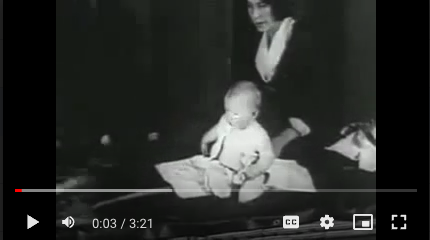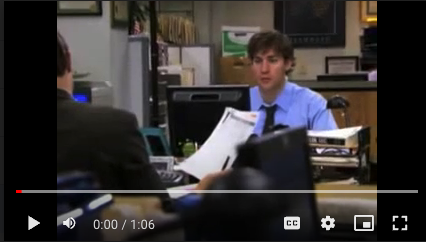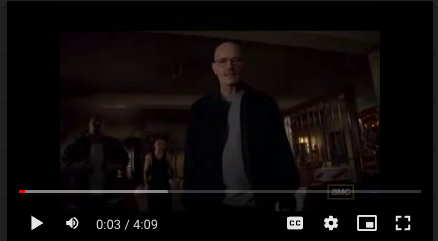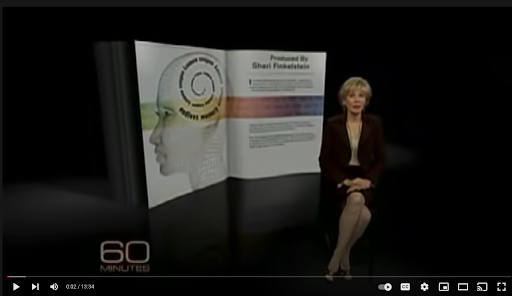From 2012 to 2017, I taught teacher certification college students with 40+ carefully curated and organized videos that spanned my Learning Theories course curriculum—from original film capturing the Bobo Doll experiments for social learning, to Breaking Bad demonstrating transfer of skills, to Kung Fu Panda teaching the impact of self-efficacy. My curriculum also included a two-part problem-based learning workshop with some of the first pedagogy leveraging videos from the early ‘90s and were originally on CD-ROM. Each semester, dozens of students wrote the same things on their course evaluations: “loved the videos, they helped me learn the concepts in ways that were meaningful for me.”
Here’s what the playlist looked like:
Several years later, the forced migration to virtual and hybrid methods of teaching continue to leave faculty looking for ways to engage students, with 61% of faculty indicating that greater access to online digital materials would assist them in teaching online (Ralph 2020)—and video continues to gain popularity. A study by Kaltura (2022) indicates 75% of educators agreed that video engages students more than text-based content. Additionally, 94% agree that video increases student satisfaction, and the same percentage attribute an improvement in student performance to the use of video.
So where are faculty getting their videos? The obvious choice is YouTube, but 43% of surveyed respondents indicated that library media collections are their go-to source (Kaltura 2022). I agree—I supplemented my courses completely with library resources by my second year; they’re free (to me), authoritative, and accessible to all my students within my institution. And libraries are continuing to make investments in resources aligned to faculty needs, with a staggering 96 percent of librarians saying impact on instruction was important in shaping their choices regarding purchasing and renewing streaming media licenses (Cooper et al. 2022). Furthermore, libraries predict that the proportion of their materials budget dedicated to streaming media will double over the next five years (Cooper et al. 2022).
What does all of this mean, and how do I get started?
Tips & Tricks for Using Streaming Video in Your Courses
- Start with your learning objectives: how would you like to facilitate learning?
- Explicit Video Instruction of Concepts, Ideas, or Frameworks: Use video documentaries, interviews, biographies, filmed experiments, original speeches.
- Students will develop critical thinking skills associated with understanding, remembering, and applying.
- Implicit Video Instruction of Metaphor/Analogy, Opinions, Arguments, and More: Use TV shows, movies, debates, commercials, news segments
- Students will develop critical-thinking skills associated with applying, analyzing, and evaluating.
- Explicit Video Instruction of Concepts, Ideas, or Frameworks: Use video documentaries, interviews, biographies, filmed experiments, original speeches.
- Go to your institution’s library and review their video streaming offerings! Don’t see any? It’s OK, YouTube will do, but make sure to put in a request so your librarian is aware of how to make a difference in using their resources in your courses.
- Look for and use tools to do the following with your selected videos:
- Manage and organize videos through playlists for easy course video management.
- Segment the video to take out extraneous footage that doesn’t pertain to your learning objectives and to accommodate for student attention spans.
- Use transcripts to accommodate learning abilities, but also to use as a reference when having discussions with videos.
- Infuse discussion questions or quizzes within multiple segmented clips to apply conceptual ideas to more complex ones that may be represented in the video.
Here are some examples of how I integrated video into my courses. (Please note how videos do not exceed 4–5 minutes except for the documentary, which is used as a bigger discussion scaffold.)
| Learning Objectives/Video Instruction | Video |
| Explicit Instruction: Understand how the Baby Albert experiment led to the discovery of classical conditioning ideals. |  |
| Implicit Instruction: Compare and contrast the behaviors of Dwight and Jim to the concepts of classical conditioning. |  |
| Implicit Instruction: In this scene, Heisenberg is a chemistry teacher using his skills to create saleable meth and bombs against the cartel. Determine whether this is considered far or near transfer. |  |
| Explicit Instruction: In this 60 Minutes documentary, compare and contrast the experience of these participants with “super memory” with the principles of learning and memory. |  |
At Infobase, the third most commonly used streaming video provider invested in by librarians (Cooper et al. 2022), we continue to provide opportunities for faculty to leverage high-quality video content within a platform that’s not just a media player, but also includes tools that help faculty integrate streaming video into their courses. And guess what? You can use all of the tips and tricks above to amp up engagement in your courses this semester!
Interested in this platform? Check out Films On Demand today!
Are you a K–12 teacher? This instructional technique will work for your class, too. Just be sure to select grade-level-appropriate content when planning. Need help? Our K–12 video products make it easy to find aligned content for your needs.
See also:
- FREE webinar: Leveraging Supplemental Resources to Engage, Empower, Elevate, and Extend: Higher Education
- FREE webinar: Infobase Quick Hits: The Films On Demand Quiz Feature
- Help First-Year Students Succeed with Infobase
References:
Kaltura. 2022. The State of Video in Education 2022. PDF file. https://corp.kaltura.com/resources/state-of-video-education-2022/.
Ralph, Nate. 2020. Perspectives: COVID-19, and the Future of Higher Education. Bay View Analytics. http://onlinelearningsurvey.com/covid.html.
Cooper, Danielle, Dylan Ruediger, and Makala Skinner. “Streaming Media Licensing and Purchasing Practices at Academic Libraries.” Ithaka S+R. June 9, 2022. https://doi.org/10.18665/sr.316793.


